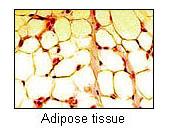Marfan syndrome is a condition in which the connective tissues are affected. Connective tissue plays the role as a support for the body and a framework for growth and development. Named after the French pediatrician Antoin Marfan, it is an autosomal dominant genetic disorder distinguished by long limbs or long phalanges in proportion to the person's height. Since connective tissues are found throughout the body, many organs and systems are affected such as the heart, lungs, eyes and nervous system. Scientists believe that the disorder is caused by a defect in the gene that produces fibrillin, which is a glycoprotein that is essential in the formation of elastic fibers found in connective tissues; this is debatable because fibrillin mutations are common amongst many people who do not have the disorder. Some people have mild signs and symptoms, while others may have severe problems and discomfort. Treatments are available for Marfan syndrome to limit and prevent complications.
People with the condition may also require emotional and psychological attention.
Marfan syndrome is a disorder that weakens the connective tissue of the body; so as a result, many structures (tendons, ligaments, and cartilage) are not as stiff as they should be. The weakening of the connective tissue is caused by a mutation in a single gene on chromosome 15, the protein known as fibrillin-1. Three out of four who develop the disorder inherit it from their parents; one out of four is known to be spontaneous mutations in which people would get it randomly. People who have Marfan syndrome have a mutation in the gene that causes the shape of the fibrillin protein to change. The irregularly-shaped proteins then assemble into an irregularly-shaped microfibril (microfibril being any fine, thread-like structure of a cell). For people with Marfan syndrome, the microfibrils in...


